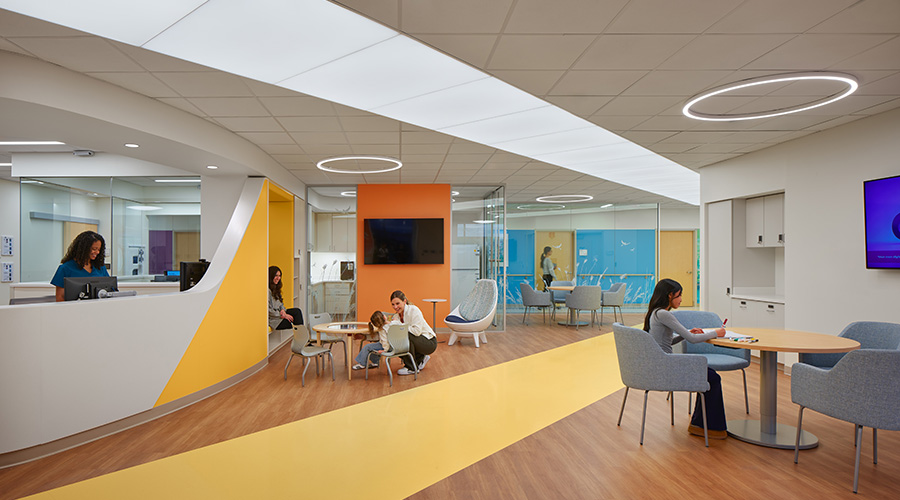The campus of the U.S. Department of Veteran’s Affairs (VA) Medical Center in Coatesville, Pennsylvania, consists of 125 acres of land, 45 buildings on the main campus totaling 975,000 square feet and two outpatient clinics totaling 20,000 square feet. My team is comprised of a projects group of engineers, maintenance department and fire department. We also have an interior designer and energy engineer.
One of my top priorities for the upcoming year is to strengthen the hand-off between our construction and maintenance teams. Our construction and designs are completed by contractors using mainly design-bid-build with some design-build. Ensuring that our designs are constructible and maintainable sets the foundation for capital improvement projects. Likewise, ensuring construction is accurate and safe is critical to the operation of any facility.
These six strategies can help healthcare facility managers connect construction and renovation projects to maintenance and operations.
Leadership
First and foremost, the chief engineer or facility manager must take a macro view of a project and make decisions that are best for the medical center and medical mission. They are responsible for examining the life cycle of the facility or structure. Having a prominent role in chartering the design projects to the final activation following construction is a critical process. This might mean making decisions in value engineering, construction changes or re-work with designs based on healthcare standards, engineering codes and life-safety codes. The manager must make the decision on construction method, as well.
Second, the chief engineer must foster a climate of teamwork in order to support collaboration between sections. The rest of the following strategies rely on a strong sense of teamwork within the facilities management team. The leader must ensure this team cohesion exists so collaboration can occur.
Effective energy engineering
Having an energy engineer who considers cost savings, maintainability and operations is critical to all designs and projects. Ideally, the energy engineer has experience with working in or inspecting physical plants. The engineer can serve as a primary advisor and observer to the chief engineer and project engineers. The energy engineer has knowledge of relevant legislation, acts and executive orders that apply to each project and might help with collaboration between different sections. The engineer also can provide estimates for life-cycle costs, providing key inputs to the decisions of the chief engineer.
Design for maintainability
Making the maintenance department part of design is critical to the process. An engineer is looking at the technical aspects of the job and might have a certain design philosophy. Typically, executive leaders and clinical professionals are focused on the patient experience and services. But the maintenance professional takes a different perspective.
For instance, maintenance technicians will analyze if there is enough room to remove and service HVAC coils as designed — a heightened consideration for indoor air quality, given the ongoing pandemic. Another example is landscaping. Is the proposed landscaping maintainable and practical for the grounds team to maintain? These aspects are considered during the design process and incorporated into the chief engineer’s decision-making process. Taking and implementing input from construction control representatives also is important because they have a strong working knowledge of codes and industry standards.
Design review
Managers should write out the design process so all personnel clearly understand their roles. With so many engineering and healthcare requirements, it is easy for aspects to be missed in the design. Chief engineers should document who is assigned to review certain portions of the design drawings and specifications. This can be broken down by engineering discipline.
I enjoy the benefits of having an experienced interior designer review all our finishes in accordance with standard colors and materials.
Second, our fire chief operates as a fire marshal, reviewing NFPA 101 and 99, as well as Joint Commission requirements. All maintenance supervisors review the designs and provide concurrence through signature before the solicitation for construction.
Construction site visits
During construction, the interior designer, energy engineer and fire chief need to visit the site frequently to verify installation is correct. Maintenance supervisors complete above-ceiling inspections with the project engineers in order to convey subject-matter expertise. The energy engineer is a great asset during HVAC system testing and balancing. When the inevitable unforeseen site condition is discovered, these experts can advise the chief engineer and project engineer on a proposed solution.
Lessons learned
Managers should write down and share the lessons learned between projects. This is an effective strategy to start conversations on various topics.
In my department, if there are mistakes in the construction, the maintenance department might need to come in and make corrections. But documenting lessons learned has provided our engineers with valuable points to verify during future construction. We also share lessons learned in recurring meetings.
For instance, one project was missing hospital-grade electrical receptacles. The process of identifying and implementing a solution was painful but also beneficial. After discovering the deficiency, our project engineer took the necessary measures to correct the problem.
Second, the whole team was made aware of the situation, and measures were taken to prevent this issue from occurring in the future. All engineers now know to closely review the electrical specifications and drawings to ensure they meet the requirements for NFPA 99. Quality control and material inspection are now more rigid, and regular consultation with the fire chief is now standard process.
Our department has implemented these six strategies and continuously improved operations. Creating a strong team with technical knowledge will greatly increase the life cycle of critical assets at any healthcare facility.
Anthony Caruso, P.E., PMP, is the chief engineer at the VA Medical Center in Coatesville, Pennsylvania. He is a veteran of the U.S. Army and a degreed civil engineer.

 Contaminants Under Foot: A Closer Look at Patient Room Floors
Contaminants Under Foot: A Closer Look at Patient Room Floors Power Outages Largely Driven by Extreme Weather Events
Power Outages Largely Driven by Extreme Weather Events Nemours Children's Health Opens New Moseley Foundation Institute Hospital
Nemours Children's Health Opens New Moseley Foundation Institute Hospital Code Compliance Isn't Enough for Healthcare Resilience
Code Compliance Isn't Enough for Healthcare Resilience Ribbon Cutting Marks First Phase Completion for New Montefiore Einstein Facility
Ribbon Cutting Marks First Phase Completion for New Montefiore Einstein Facility